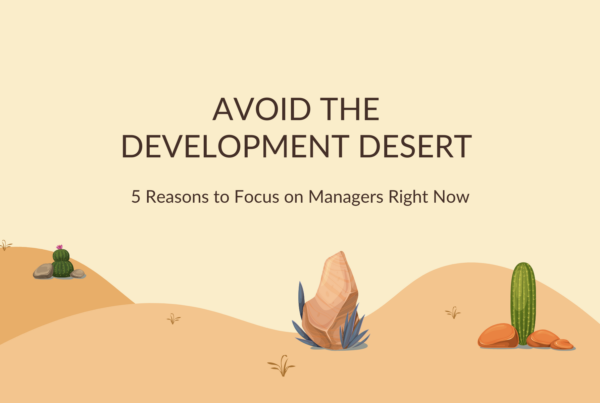In several recent blog posts and webinars, we’ve discussed the impact of a culture that supports, encourages, and celebrates both good and constructive feedback. The performance review is one of the most important channels for this feedback.
A lot goes into preparing for a performance review – reviewing peer feedback, communicating expectations with the employee in advance, and carefully thinking through how to deliver your key messages. But spoken feedback is only one part of the meeting. Below the surface is non-verbal feedback, most of which is conveyed subconsciously. To provide a safe, supportive environment for an employee who may already be nervous about the conversation, be mindful about the following non-verbal cues.
Posture Sets the Stage
For a book they were writing on body language, Gerard I. Nierenberg and Henry H. Calero videotaped a series of negotiations and noted what worked and what didn’t. Not one of the 2,000 negotiations they observed ended successfully when one of the people involved had their arms or legs crossed.
Be conscious of the impact your own posture has on direct reports in these meetings. Certain physical positions signal that you are upset, nervous, or even angry. If your arms are crossed and your body tilted away from the door, it can make them uneasy and start the meeting on the wrong foot. Consciously try to maintain an open posture by facing the employee directly and sitting upright to appear actively engaged. Before a word is spoken, your posture will establish the mood of the meeting. Nervous or not, keep this in mind to avoid an uncomfortable start.
Eye Contact Establishes Trust
Research has shown that we associate a higher degree of intellect with someone who maintains eye contact, and that those who actively avoid it are less sincere. If your eyes flicker to your computer or phone constantly, it can partially undermine the impact of what you are saying, making the other party feel like the meeting is less important than any number of other things on your to do list.
The right amount of eye contact is crucial to building trust with your direct reports in these already very stressful meetings. This is particularly important when the feedback becomes critical or your direct report becomes defensive or upset. Practice in lower stress situations, at lunch with colleagues, in regular one-on-ones, and at networking events. It’s much easier to maintain a healthy amount of eye contact when the stakes are so much lower.
Facial Expressions Say What Your Words Don’t
Your facial expressions can have an immediate and direct impact on the other party. Research by Ulf Dimberg, a Professor at Uppsala University in Sweden, shows that we unconsciously mirror each other’s emotions. If someone frowns, our own frown muscles activate. The same is true of a smile. Empathy can be a physical response, triggering muscular reactions in your body to process and accept what we are seeing in someone else. Our minds and bodies are so attuned to a smile that you can practically hear it in someone’s voice, even if you can’t see them. The more welcoming and disarming your facial expressions are, the better the other party will respond.
Vocal Patterns Telegraph How You Feel
Your voice is a highly accurate barometer of your emotional state. Research in recent years shows how well we can guess how someone feels based on the tone of their voice, so much so that voice assistants are being taught to do so and respond accordingly. We’re hardwired to instantly make these connections, and those senses become even more acute when it’s someone with whom we have a close connection. Your direct reports will respond instantly to shifts in your tone of voice that represent emotional highs or lows.
Much of this is unconscious. A slightly lower voice, heavier breathing, or exasperated tone can telegraph how you really feel in an already tense situation. The key is balance. To communicate authority without being disrespectful or seemingly angry, maintain an even tone of voice without ambiguity that can be confused as hostile. Quiet responses can be seen as lacking confidence. Louder, angry responses can be interpreted as “out of control”. Be deliberate in what you say to avoid these miscommunications from upending your meeting.
How to Use This Information
To a certain degree, our body language is subconscious. Few people intentionally cross their arms when angry or nervous. It’s just something we do. By becoming aware of how your body responds based on your emotions, you can make small adjustments. Smile when appropriate, sit upright and make eye contact – these are things you can directly control.
Body language offers subtext in a conversation, but can also override the message if it contradicts what you’re trying to say. Be intentional and focus on how best to represent how you really feel in these conversations to full engage your subordinates during a review.
Leadership coaching can help you better prepare for performance reviews. Learn more by requesting a demo below.



